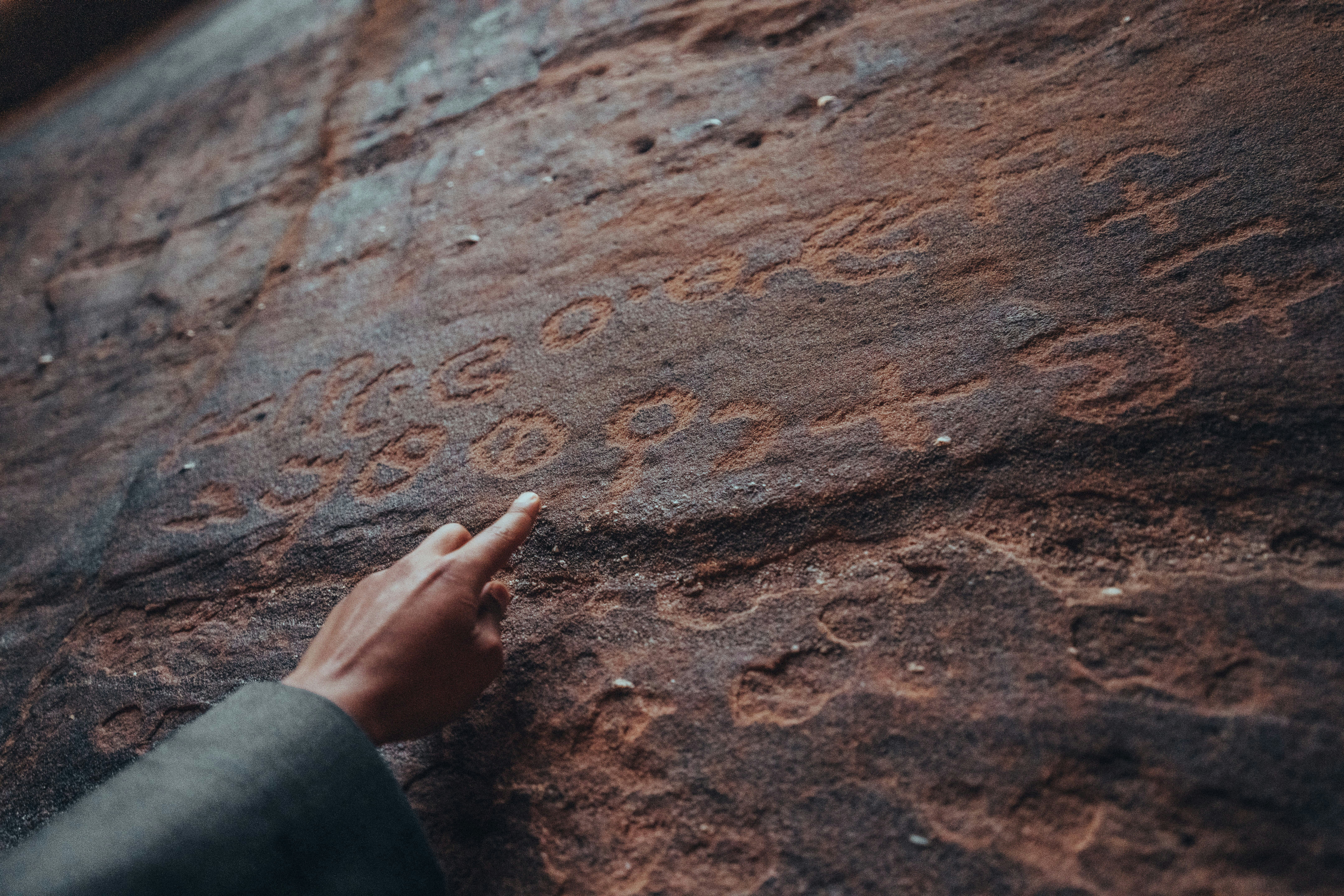Come and embark on a journey through time as you explore the rich Native American history surrounding the majestic Mount Shasta. Delve into the depths of the past and uncover the fascinating stories and ancient traditions of the indigenous people who once called this sacred land their home. From ancient ruins to sacred burial grounds, each site holds a unique tale that will transport you to a bygone era. So grab your map and get ready to immerse yourself in the enchanting history that lies just beyond the shadow of Mount Shasta.
Geographical Importance of Mount Shasta
Natural features contributing to the significance of Mount Shasta
Mount Shasta, located in northern California, holds immense geographical importance due to its unique natural features. Standing at 14,179 feet, it is a prominent stratovolcano that dominates the surrounding landscape. Its massive size and distinct conical shape make it a captivating sight and a significant landmark in the region. The mountain is also home to several glaciers, such as the Whitney Glacier, which attracts visitors and researchers alike.
Another notable natural feature is the abundance of mineral springs and water sources in the vicinity of Mount Shasta. The mountain's snowmelt feeds into various streams and rivers, contributing to the fertile soil and lush vegetation in the surrounding areas. These natural water sources have nurtured a diverse ecosystem, making the region attractive for both wildlife and human settlements throughout history.
Strategic significance for Native American tribes
Native American tribes recognized the strategic significance of Mount Shasta long before European settlers arrived. Due to its prominent position and unique topography, the mountain served as a navigational landmark for tribes in the region. Its distinctive shape and snow-capped peak offered a reliable point of reference for territorial boundaries and tribal movements.
Beyond navigation, Mount Shasta also played a significant role in cultural and spiritual practices of the Native American tribes. The mountain was perceived as a sacred place, often considered the center of the universe. Tribes valued the spiritual and metaphysical energy emanating from the mountain, believing it to be a gateway to other realms. The strategic and sacred importance of Mount Shasta made it a gathering place, fostering intertribal connections and exchanges.
Prehistoric Native American Presence in the Mount Shasta Region
Archaeological evidence of early Native American habitation
Archaeological research conducted in the Mount Shasta region has provided substantial evidence of early Native American habitation. Excavations have unearthed artifacts, such as tools, pottery fragments, and remnants of ancient dwellings, indicating human presence dating back thousands of years. These findings suggest that various tribes have called this region home for countless generations.
Inferred lifestyle and sustenance methods
Based on the archaeological evidence available, researchers have been able to infer the lifestyle and sustenance methods of the prehistoric Native American tribes in the Mount Shasta region. The abundance of water sources, fertile soil, and diverse flora and fauna allowed these tribes to adopt a sustainable lifestyle. They relied on hunting, fishing, and gathering wild plants for sustenance. Additionally, evidence of rudimentary agricultural practices indicates that some tribes cultivated crops to supplement their food resources. These prehistoric Native American communities showcased their adaptability and resourcefulness in utilizing the rich natural resources of the Mount Shasta region.
Tribes Associated with Mount Shasta
The Shasta Tribe
The Shasta Tribe was one of the major Native American tribes associated with Mount Shasta. They inhabited the area around the mountain and its surrounding regions for centuries. The Shasta people thrived in the diverse ecosystem and developed a deep spiritual connection with Mount Shasta. They revered the mountain as a sacred place and believed it to be the dwelling of powerful spiritual beings.
The Modoc Tribe
The Modoc Tribe also had a significant presence in the Mount Shasta region. Primarily residing in the area surrounding Tule Lake in California and Oregon, the Modoc people had strong cultural ties to Mount Shasta. They considered the mountain as a place of great spiritual significance and incorporated it into their oral traditions and mythology. The Modoc people had a close relationship with the Shasta Tribe and engaged in peaceful interactions as well as occasional conflicts.
The Wintu Tribe
The Wintu Tribe, centered around the watersheds of the Sacramento River and Pitt River, also had historical connections to Mount Shasta. This tribe lived in close proximity to the mountain, utilizing its abundant natural resources for their sustenance and cultural rituals. The Wintu people, like other tribes in the region, held Mount Shasta in high regard and considered it a sacred place of spiritual power.
Inter-tribal interactions in the region
The Mount Shasta region provided a meeting point for various Native American tribes, fostering inter-tribal interactions and exchanges. The tribes in the region held gatherings and intertribal ceremonies at the mountain, promoting cultural cohesion and exchange of knowledge. These interactions helped shape the regional culture, fostering a sense of unity and shared heritage among the tribes associated with Mount Shasta.
Cultural Significance of Mount Shasta
Mount Shasta in Native American mythology and folklore
Mount Shasta holds immense cultural significance in Native American mythology and folklore. Numerous tribes in the region incorporated the mountain into their creation stories, considering it the birthplace of their people. According to some legends, Mount Shasta was the dwelling place of powerful spiritual beings and served as a gateway to the spirit realm. The mountain was regarded as a sacred site of vision quests and ceremonial rituals, honoring ancestral spirits and seeking divine guidance.
Sacred rituals associated with the mountain
Native American tribes conducted sacred rituals and ceremonies at Mount Shasta throughout history. These rituals were deeply rooted in their spiritual beliefs and practices. People would embark on pilgrimages to the mountain, seeking spiritual enlightenment, healing, and communication with the spirit world. Vision quests, sweat lodge ceremonies, and prayer gatherings were common practices associated with Mount Shasta. The mountain's spiritual energy and natural beauty created a conducive environment for these sacred rituals.

Artifacts and Sites around Mount Shasta
Discovery and study of Native American artifacts in the region
The discovery and study of Native American artifacts in the Mount Shasta region have provided valuable insights into the history and culture of the indigenous tribes. Archaeologists have unearthed tools, pottery, rock art, and other artifacts, shedding light on the daily lives, artistic expressions, and spiritual beliefs of the Native American tribes. These artifacts are carefully preserved and studied to understand the rich cultural heritage associated with Mount Shasta.
Major archaeological sites
Several archaeological sites in the Mount Shasta region have yielded significant findings and contribute to our understanding of the Native American presence in the area. One such site is the Lower Soda Springs Site, which has provided evidence of human habitation dating back thousands of years. The site has offered a wealth of artifacts, including projectile points, obsidian flakes, and stone tools, offering a glimpse into the prehistoric Native American lifestyle.
Native American Survival Techniques
Food sourcing and hunting practices
Native American tribes in the Mount Shasta region developed unique food sourcing and hunting practices based on their intimate knowledge of the local environment. They relied on hunting game animals such as deer, elk, and small mammals for meat, hides, and other resources. Fishing in the abundant rivers and lakes provided additional sustenance, with tribes catching salmon, trout, and other fish species. Gathering wild plants, nuts, and berries supplemented their diet, ensuring a varied and nutritious food supply.
Shelter-building techniques
The challenging mountainous terrain and diverse weather conditions of the Mount Shasta region required tribes to develop efficient shelter-building techniques. Native Americans constructed different types of shelters depending on the season and their lifestyle. During summer, semi-permanent structures made of poles, branches, and bark provided shelter. In colder months, they built sturdy winter lodges known as pit houses or earth lodges, which offered protection from the harsh elements.
Coping with the mountainous terrain and weather
Living in the mountainous region of Mount Shasta necessitated specialized knowledge and skills to navigate the challenging terrain and weather conditions. Native American tribes were skilled mountaineers, traversing the rugged landscape with ease. They crafted snowshoes and other specialized tools to travel through deep snow. Their intimate understanding of the terrain and weather patterns allowed them to adapt their lifestyles accordingly, showcasing their ability to thrive in the demanding environment.

Impact of Colonialism on the Native Tribes of Mount Shasta
Initial encounters with European explorers
The arrival of European explorers and settlers in the Mount Shasta region had a profound impact on the Native American tribes. Initial encounters were marked by curiosity and trade, with tribes establishing peaceful relationships with the newcomers. However, as European influence and settlement increased, conflict and discord began to arise, leading to detrimental consequences for the indigenous tribes.
Changes spurred by colonization
Colonization brought significant changes to the Native American tribes of Mount Shasta. The introduction of new diseases, such as smallpox and influenza, decimated tribal populations, leading to the loss of countless lives and cultural knowledge. The imposition of European systems, such as land ownership, disrupted traditional tribal practices and territory rights. Native American tribes were forced to adapt to these drastic cultural and societal changes, often with devastating consequences.
Native American resistance and adaptation
Despite the challenges posed by colonization, Native American tribes in the Mount Shasta region demonstrated remarkable resilience and resistance. They fought to preserve their cultural traditions, spirituality, and land rights, even in the face of overwhelming odds. Many tribes strategically adapted to the changing conditions, forging alliances and collaborating with other tribes to protect their shared interests. The legacy of Native American resistance and adaptation continues to shape the contemporary landscape and cultural identity of the Mount Shasta tribes.
The Gold Rush and Mount Shasta Tribes
Effects of the Gold Rush on indigenous populations
The California Gold Rush of the mid-19th century had a profound impact on the indigenous populations of the Mount Shasta region. The influx of gold seekers resulted in a rapid and unprecedented wave of settlers, leading to the displacement of Native American tribes from their ancestral lands. Conflict and violence escalated as gold miners encroached upon Native American territories, resulting in the loss of lives and disruption of traditional tribal ways of life.
Exploitation and displacement of Native American tribes
The gold rush period witnessed the severe exploitation and displacement of Native American tribes in the Mount Shasta region. The desire for land and resources by European settlers led to forced removals, mass killings, and the destruction of tribal communities. Native Americans were pushed off their ancestral lands and confined to reservations, where they faced harsh living conditions and the loss of cultural autonomy. The effects of this tragic period continue to impact the Native American tribes of Mount Shasta to this day.
Current Status of Native Tribes in the Mount Shasta Region
Contemporary challenges faced by the tribes
The Native American tribes of the Mount Shasta region continue to face numerous challenges in the modern era. Socioeconomic disparities, limited access to quality healthcare and education, and environmental concerns pose significant obstacles. The loss of traditional lands and resources has resulted in the erosion of tribal self-sufficiency and cultural autonomy. Efforts to address these challenges and promote the well-being of Native American communities are ongoing.
Efforts to preserve indigenous culture and history
Numerous organizations, tribal councils, and community initiatives are actively working on preserving the indigenous culture and history of the tribes in the Mount Shasta region. Collaborative efforts between Native American communities, scholars, and government agencies aim to document and revitalize traditional languages, cultural practices, and storytelling traditions. Cultural centers and museums provide spaces for the preservation and celebration of Native American heritage, promoting intergenerational knowledge transfer and community pride.
Visiting Native American Sites at Mount Shasta
Important guidelines for respectful visitation
When visiting Native American sites at Mount Shasta, it is crucial to approach them with respect and consideration for the cultural significance they hold. Adhere to any guidelines or restrictions outlined by tribal authorities or park management. Avoid disturbing or removing any artifacts or objects at the sites, as they are essential to the historical and cultural context. It is essential to maintain a humble and reverential attitude while exploring these sacred spaces.
Sites of historical and cultural interest
Several sites around Mount Shasta hold historical and cultural significance for Native American tribes. Panther Meadows, located on the mountain's slopes, is a sacred meadow and a place of prayer and meditation for Native American communities. Sisson Meadows, near the town of Mount Shasta, hosts tribal events and cultural gatherings. These sites offer visitors an opportunity to engage with the rich Native American history and culture of the region.
Engaging with contemporary Native American communities
Engaging with contemporary Native American communities is an excellent way to learn and support the tribes of the Mount Shasta region. Attend cultural events, such as powwows and traditional ceremonies, to experience the vibrancy of Native American culture firsthand. Additionally, consider supporting local Native American-owned businesses and organizations that work towards preserving and promoting indigenous heritage. Engaging respectfully and responsibly with the Native American communities fosters mutual understanding and appreciation.

